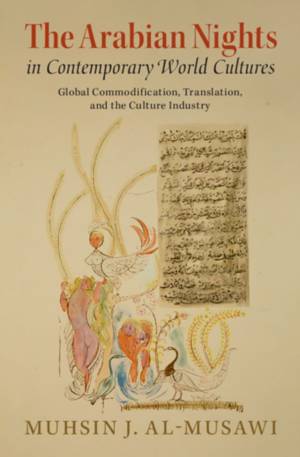
- Afhalen na 1 uur in een winkel met voorraad
- Gratis thuislevering in België vanaf € 30
- Ruim aanbod met 7 miljoen producten
- Afhalen na 1 uur in een winkel met voorraad
- Gratis thuislevering in België vanaf € 30
- Ruim aanbod met 7 miljoen producten
Zoeken
The Arabian Nights in Contemporary World Cultures
Global Commodification, Translation, and the Culture Industry
Muhsin J Al-Musawi
Hardcover | Engels
€ 69,45
+ 138 punten
Uitvoering
Omschrijving
The stories in the Thousand and One Nights, or the Arabian Nights, are familiar to many of us: from the tales of Aladdin, Sinbad the Sailor, Ali Baba and his forty thieves, to the framing story of Scheherazade telling these stories to her homicidal husband, Shahrayar. This book offers a rich and wide-ranging analysis of the power of this collection of tales that penetrates so many cultures and appeals to such a variety of predilections and tastes. It also explores areas that were left untouched, like the decolonization of the Arabian Nights, and its archaeologies. Unique in its excavation into inroads of perception and reception, Muhsin J. al-Musawi's book unearths means of connection with common publics and learned societies. Al-Musawi shows, as never before, how the Arabian Nights has been translated, appropriated, and authenticated or abused over time, and how its reach is so expansive as to draw the attention of poets, painters, illustrators, translators, editors, musicians, political scientists like Leo Strauss, and novelists like Michel Butor, James Joyce and Marcel Proust amongst others. Making use of documentaries, films, paintings, novels and novellas, poetry, digital forums and political jargon, this book offers nuanced understanding of the perennial charm and power of this collection.
Specificaties
Betrokkenen
- Auteur(s):
- Uitgeverij:
Inhoud
- Aantal bladzijden:
- 344
- Taal:
- Engels
Eigenschappen
- Productcode (EAN):
- 9781108474856
- Verschijningsdatum:
- 26/08/2021
- Uitvoering:
- Hardcover
- Formaat:
- Genaaid
- Afmetingen:
- 152 mm x 229 mm
- Gewicht:
- 748 g

Alleen bij Standaard Boekhandel
+ 138 punten op je klantenkaart van Standaard Boekhandel
Beoordelingen
We publiceren alleen reviews die voldoen aan de voorwaarden voor reviews. Bekijk onze voorwaarden voor reviews.











